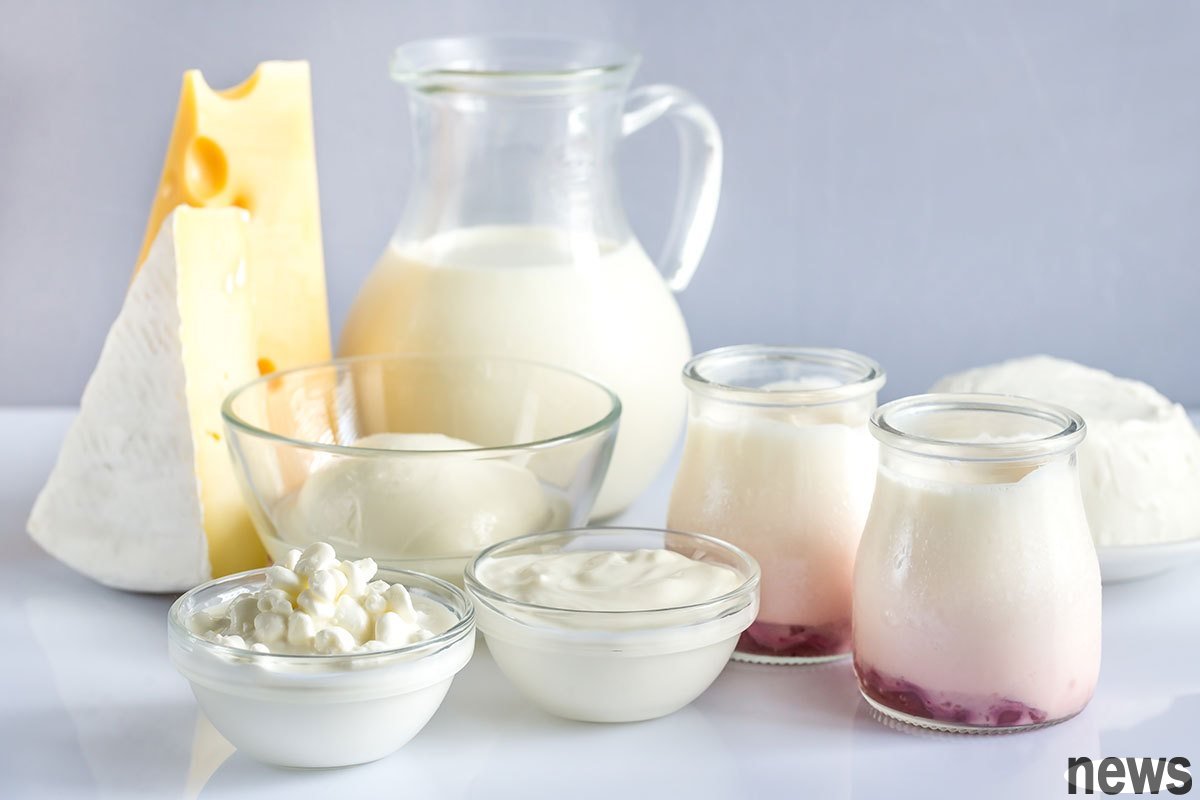Is it unhealthy to drink whole milk? Can eating good food replace milk? Liu Yili answers various questions about choosing dairy products
 Clinic Story
Clinic Story Xiaoxuan goes to a convenience store to drink a box of "Calcium Milk Milk Beverages". His colleague Arui picked up Xiaoxuan's drinks: "Are you afraid that your bones will become loose when you get old? The milk is not enough to supplement the calcium, so you still need to add calcium." Xiaoxuan clicked the head, and Arui turned the box over to see the ingredient list: "But the ingredient list at the back doesn't seem to be right. The ingredients are water, milk powder, sugar, and various additives... Is this fresh milk? Are you sure you drink milk or sugar water?" Xiaoxuan turned back to the milk drink and looked at it in detail: "Oh My God ! What am I drinking? ”
These are all right. Milk and soybeans cannot be replaced
. Lactose intolerance can improve
. Don't drink high iron or high calculator, nutritionist Liu Yili, often asks me when I'm in nursing clinics: If you can't drink milk, can you drink beans? Actually, I find it difficult to answer because according to the 6 major categories of foods, milk is a dairy product, and beans are beans, fish, eggs and meat, two completely different categories. If we follow this daily diet guide six major fan-shaped illustrations, we should drink milk and beans. People who don’t drink milk and drink beans instead may have lactose intolerance and may have diarrhea if they drink milk. What should I do?
Dairy products mainly provide nutritional sources: protein, lactose, fat, vitamins (especially vitamin B2), and minerals (calcium quality is the most important). People generally lack calcification, and taking 1 to 2 cups of fresh milk a day is a source of easier access to calcification. If you don’t eat dairy products, it is recommended that the source of calcium beans can be supplemented from traditional hard tofu, small dried tofu, green leaf vegetables, black sesame seeds, and dried fish.
Lactose intolerance can improveLactose intolerance can be improved. The first is to drink slowly and in stages; in fact, there is lactase in every body, which can decompose lactose, that is, decompose lactose in milk, and after it becomes lactic acid, it will not cause diarrhea or cause diarrhea. However, some people have less activity in their body lactase. The way to singularize is: "The lactase in the body has not yet woken up."
To train your body to increase the activity of lactase, how to stimulate it? Drink a little milk first, start with a small amount, a few times, and drink a little more every day to increase slowly. So some people will not have diarrhea when drinking milk before, but they didn’t drink it all over the past week, and drinking milk will cause diarrhea again. This is the reason, which means that the activity of lactase in their body has decreased.
The second method is suitable for people with severe lactose intolerance. Some elderly people will have diarrhea and abdominal distension when drinking a small amount of milk. I would suggest choosing milk with low lactose or no lactose, which can provide people with lactose intolerance as their choice. If it is really repulsive, you can change to EQ. EQ is fermented, and part of the lactose will be converted into lactic acid during the fermentation process, so it is not easy to cause diarrhea.
Therefore, some people say that drinking milk will cause diarrhea, and eating good food is OK; that is the reason. This method is suitable for elderly people or children with severe lactose intolerance. The nutrients in the quality are very similar to those in milk. As for dairy products, we would suggest that
should take milk first. If not, eat qualifier or qualifier buttermilk, and then eat cheese tablets. These three foods can replace each other. However, commercially available buttermilk may have sugar-containing problems. When choosing the best, you should choose the original flavor, do not add fruit sauce or refined sugar.
How to choose dairy products and how to replace them?Milk, Egg, Egg buttermilk, cheese, these are all in the dairy category. It is recommended that the amount of milk in the amount is 240 ml, whether it is full or low-fat one cup of milk. I replace it with the portions of protein, sugar and fat:
The following are different dairy replacement methods:1 cup
(1 cup = 240 ml of whole fat, fat or low-fat milk = 1 serving)
= 1 cup of fresh milk, long-lasting milk, buttermilk (240 ml)
= 4 soups of whole milk powder (30 grams)
= 3 soups of low-fat milk powder (25 grams)
= 2.5 soups of fat milk powder (20 grams)
= 2 slices of cheese (cheese) (45 gram)
=Exceed 210 grams
Some people drink milk and may cause stomach upset and are not suitable. You can take two cheese tablets instead. However, there is a difference between milk and cheese tablets. Special attention should be paid to it. Cheese tablets are usually added, so you may eat more salt. People who are afraid of eating too many salts. There are low-fat, low-salt cheese tablets on the market that can be selected.
Which one should I choose for whole fat, low fat and fat milkBecause most people have more oily dietary habits, I would recommend low fat milk. Someone may ask whether the nutrients of low-fat milk are sufficient? In terms of nutrients, the difference in fat content of whole fat, low fat and fat milk can reduce the intake of oil. If you say that individuals do not eat too much oil, it is actually not related to drinking whole milk; now there is research abroad that you can drink whether it is low-fat or whole fat.
The most affected by fat-soluble milk may be the absorption of fat-soluble vitamins A, D, E, and K, because the fat content is relatively small, which will affect the absorption of these nutrients. However, it was mentioned that in fact, Chinese people usually eat oily, and sometimes they eat more than half of the amount of fat for breakfast, so they don’t have to worry too much about the absorption of fat-soluble vitamins. In conjunction with the dietary habits of the people, the content of fat is not the main focus, the protein and calcium in milk.
Milk is a good source of calcium. Drinking 240 ml of milk a day provides 240 mg of calcium. The recommended intake of calcium is 1,000 mg per day, so one cup provides nearly 1/4 of the source. Therefore, among the six major food categories, it is recommended to drink at least 1.5 to 2 cups of milk a day, for this reason. The calcium in milk is calcium lactate, which is relatively high in absorption compared to other calcium ingredients. Milk can serve as a good source of calcium.

Common dairy names - according to the definition of national standards (CNS):
Raw milk: raw milk that is boiled from healthy cows and sheep, cold and not treated with other treatments.
Fresh milk: Use raw milk as raw material and after being packaged with sterilization, the milk for drinking must be refrigerated throughout the process.
Long-lasting milk: After raw milk or fresh milk bacteria, it can be stored in normal temperature for drinking milk.
Taste milk: Use more than 50% raw milk, fresh milk or long-lasting milk (bacterial milk) as the main raw materials, and add flavoring ingredients and other processing to make.
Dairy drinks: Add milk powder or thickened milk to water and reduce it into a proportion of the same proportion as the raw milk, and then occupy more than 50% of the total content content, or after mixing raw milk, fresh milk or long-lasting milk, the total content content is more than 50%, so that other non-dairy raw materials and food additives can be mixed into unfermented beverage products.
In addition, according to the national standard CNS3056, the regulations for fresh milk:
High-fat milk: 3.8% milk fat or above
Whole fat milk: 3.0% milk fat or above 3.8%
Medium fat milk: 1.5% milk fat or above 3.0%
Low-fat milk: 0.5% milk fat or above 1.5%
Liquid fat milk: 0.5% milk fat or above 0.5%
It is currently recommended that children under 2 years old and drink whole milk; for those over 2 years old, they can choose whole milk or low-fat. My suggestion is that if people who want to lose weight or control fat in their diet, they can choose low-fat or fatty milk to be healthier.
Be careful not to drink "high iron and high calcification milk". I will emphasize that the absorption of iron and calcification is actually mutually antagonistic, that is, the two compete and influence each other. If high calcification and high calcification are added to dairy products, the absorption rate of both will decrease.
The fresh milk already has a rich vitamin B group, but there are still strengthening milk with vitamin B2 added, and leafy yellow gluten for health care. I will not object to these. Some brands of reinforced milk really use fresh milk to strengthen nutrition and increase nutritional ingredients. This is of course a more appropriate approach. However, this price is relatively expensive, so consumers may have to weigh their pocket depth first.
(This article is excerpted from the "Privacy Policy for National Nutrition" published by Outstanding Culture)





